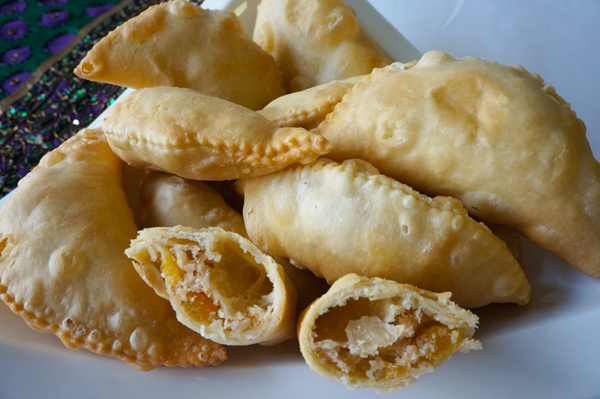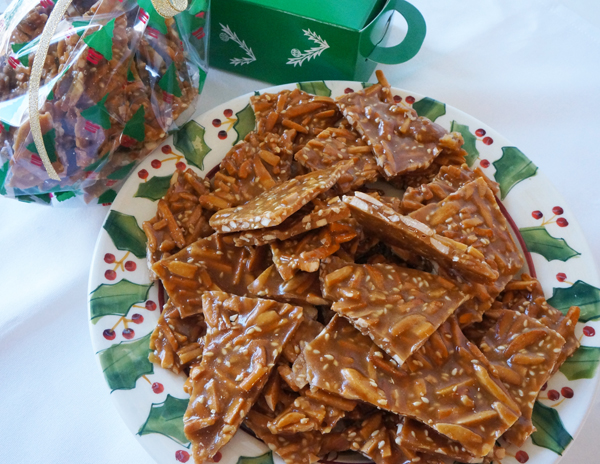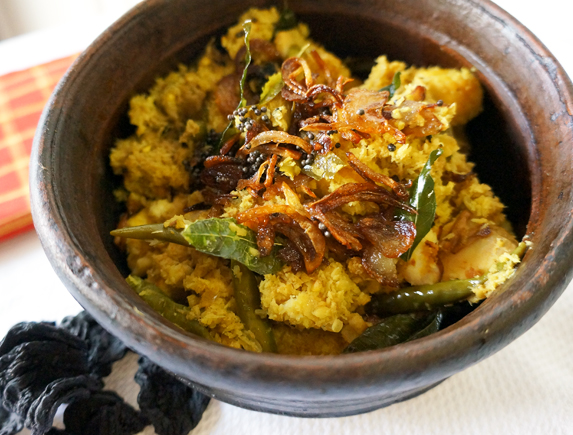MERRY CHRISTMAS, readers! I am sure many Indian homes have Karanjis during this time of the year. They are a popular Maharashtrian sweet, but other regions in India also make them. Most often, the filling is made from dry coconut (copra), and the pastry shell is made from all purpose flour, ghee (clarified butter), and salt. You can buy ghee at any Indian grocery store. Many families have their own variation of this Christmas treat.
But, in my view, nothing came close to the karanjis made by my little sister, Sonia Poddar. They were the best I had ever tasted! They melted in my mouth. The shell was flaky, crisp, and crunchy, and the freshly grated coconut filling had just the right amount of sweetness. I asked her if I could share her recipe with you, and she graciously agreed. Thank you, Sonia.
Since these karanjis are made with fresh coconut, they are meant to be eaten soon after you make them. The recipe below will make about 20 small karanjis. If you want the karanjis to last longer, then dry roast the freshly grated coconut over medium heat until the water in the flakes of coconut evaporate, and they turn light brown, and smell fragrant.
Karanjis
For the pastry shell
1 cup all purpose flour
2 tablespoons ghee
¼ teaspoon salt
Warm water
Oil for deep frying
Rub ghee into the flour until the mixture is crumbly. Add warm water to make a smooth dough; approximately 1/3 cup of water. Cover the dough with a damp towel, and let it rest for 20-30 minutes.
For the filling
1 cup freshly grated coconut
1 cup sugar
1 cup finely chopped nuts (cashew and almond)
¼ cup golden raisins
¼ teaspoon cardamom powder
1 teaspoon poppy seeds (khus khus)
Roast poppy seeds in a small pan over low heat for one minute. Put all the ingredients in a bowl, mix well, and set aside.
Divide the dough into 20 equal sized portions and roll them into balls. Keep them covered with a wet towel so they do not dry out. Roll them into thin circles. Wet the edge of the circle with water. Put one teaspoon of the filling in the center. Gently fold over the filling to make a semi circle. Press the edge well, with your finger tips to seal. Trim the edge with a pastry cutter or karanji cutter. This will also help seal the edge of the karanji. Keep the karanjis in a tray, and cover them with a damp paper towel to keep them moist until you are ready to fry them.
Place a heavy bottomed wok (kadai) over medium-high heat, and pour oil to a depth of about five inches. Fry a few karanjis at a time until they turn light brown on both sides. Drain on paper towels.




